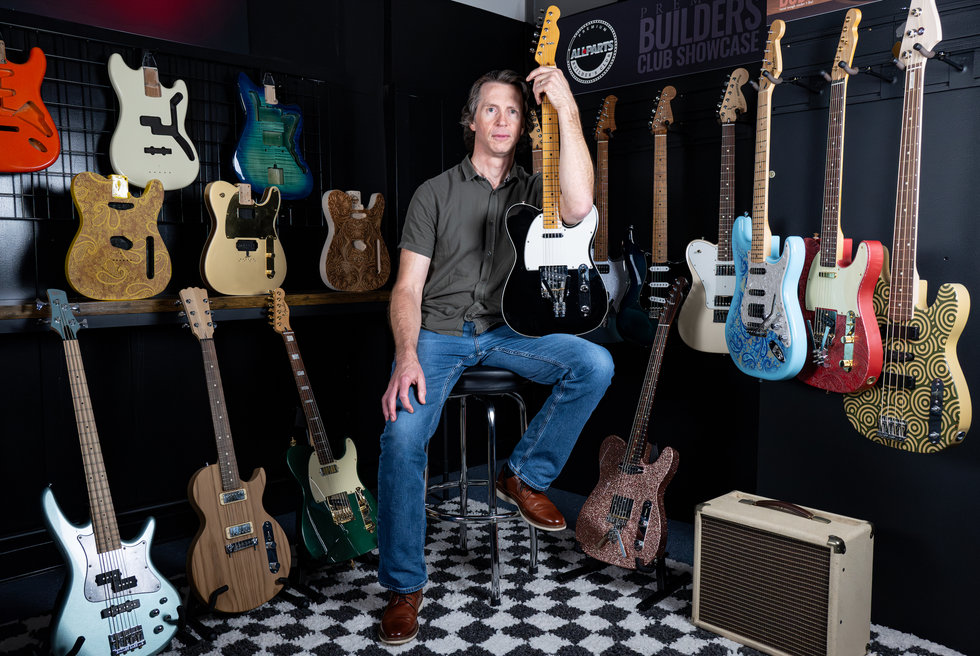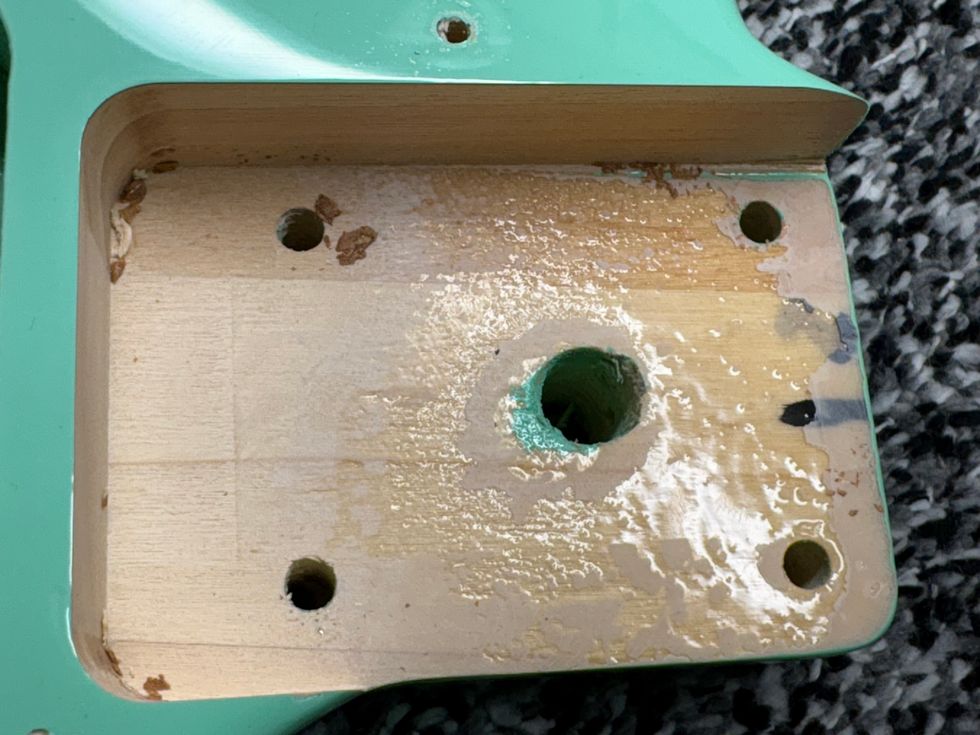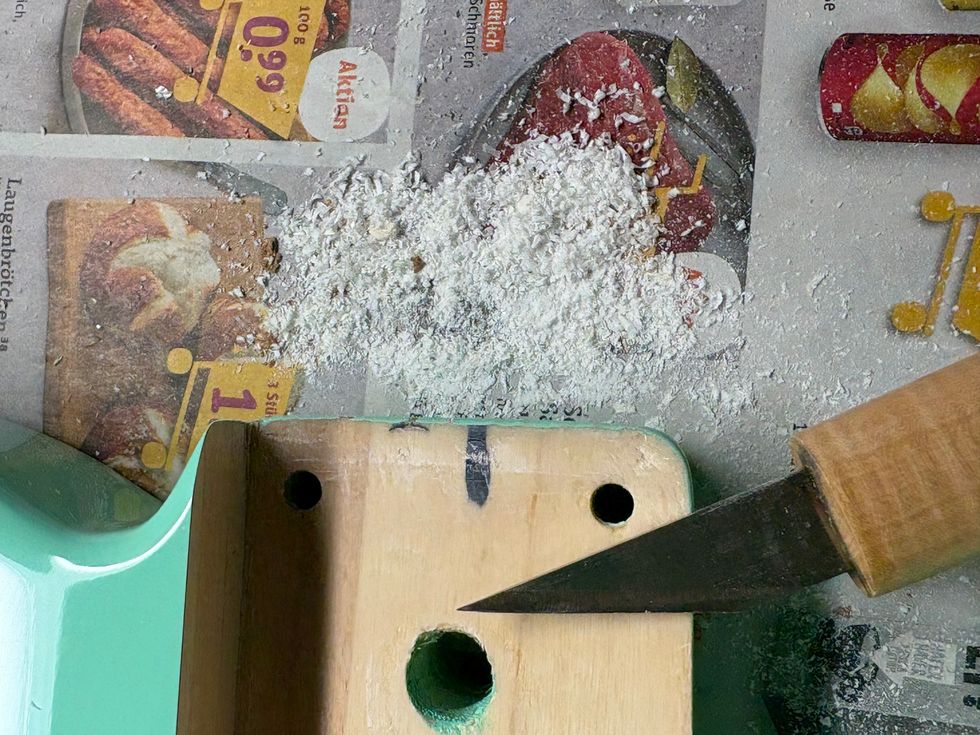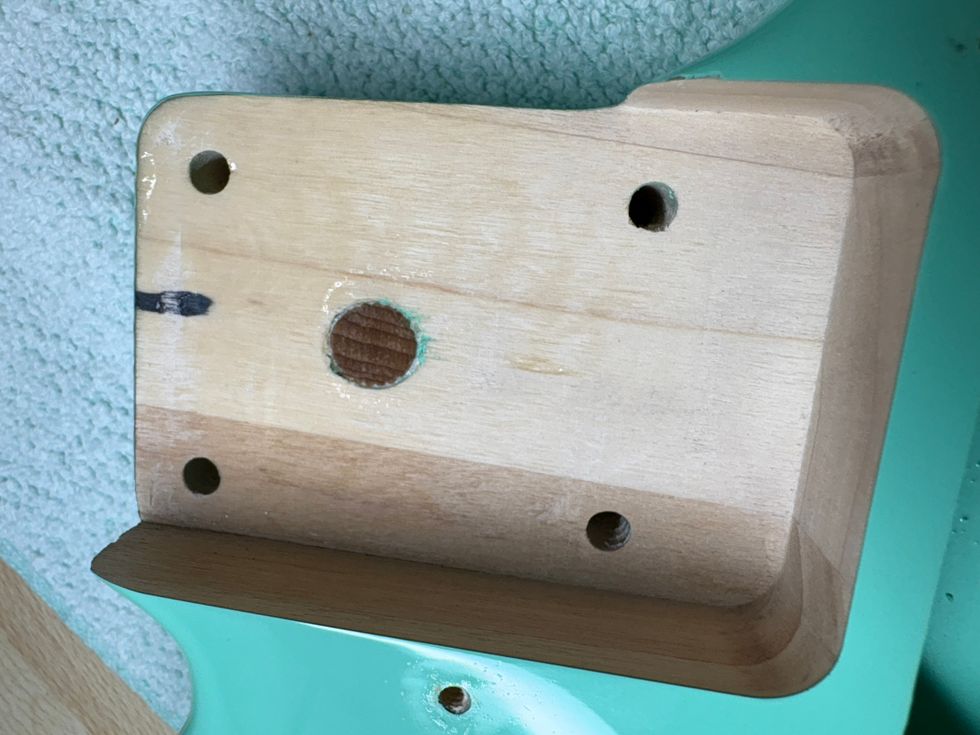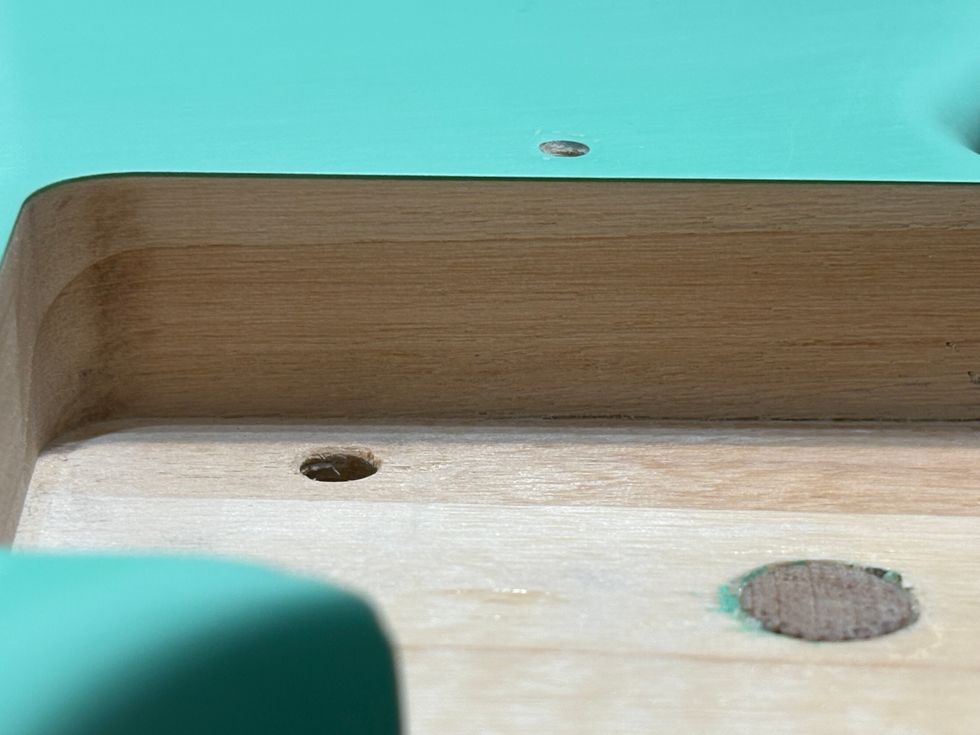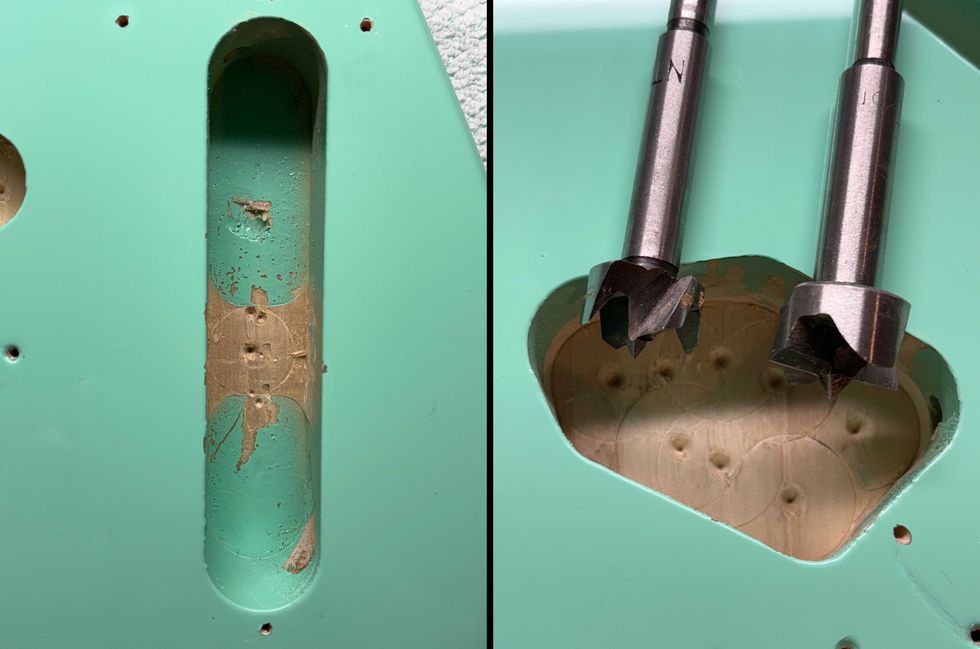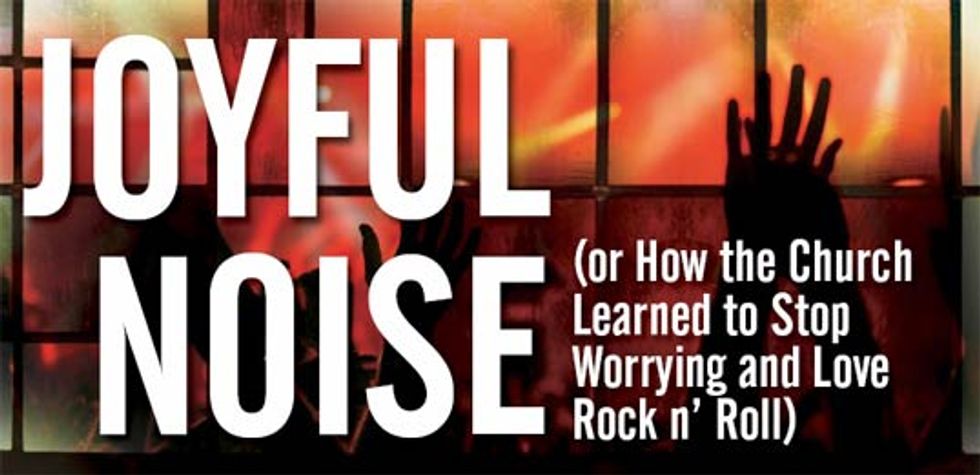
It’s a little past 5:30 on a brisk Tuesday night in Eastern Iowa, and the sun has already set past the horizon. Richard Bruxvoort-Colligan, First Lutheran Church’s minister of worship life, stands with an oval plate of cookies at the front of the sanctuary, waiting patiently for the rest of the musicians to arrive. I ask him if they’re homemade, and he casts a sly grin before answering, “They’re from Subway. But who doesn’t like cookies?” Richard is dressed in a yellow sweatshirt, with a purple-ish bandana wrapped around his head, and looks more like a blue collar worker just off his shift instead of a veteran songwriter and guitarist.
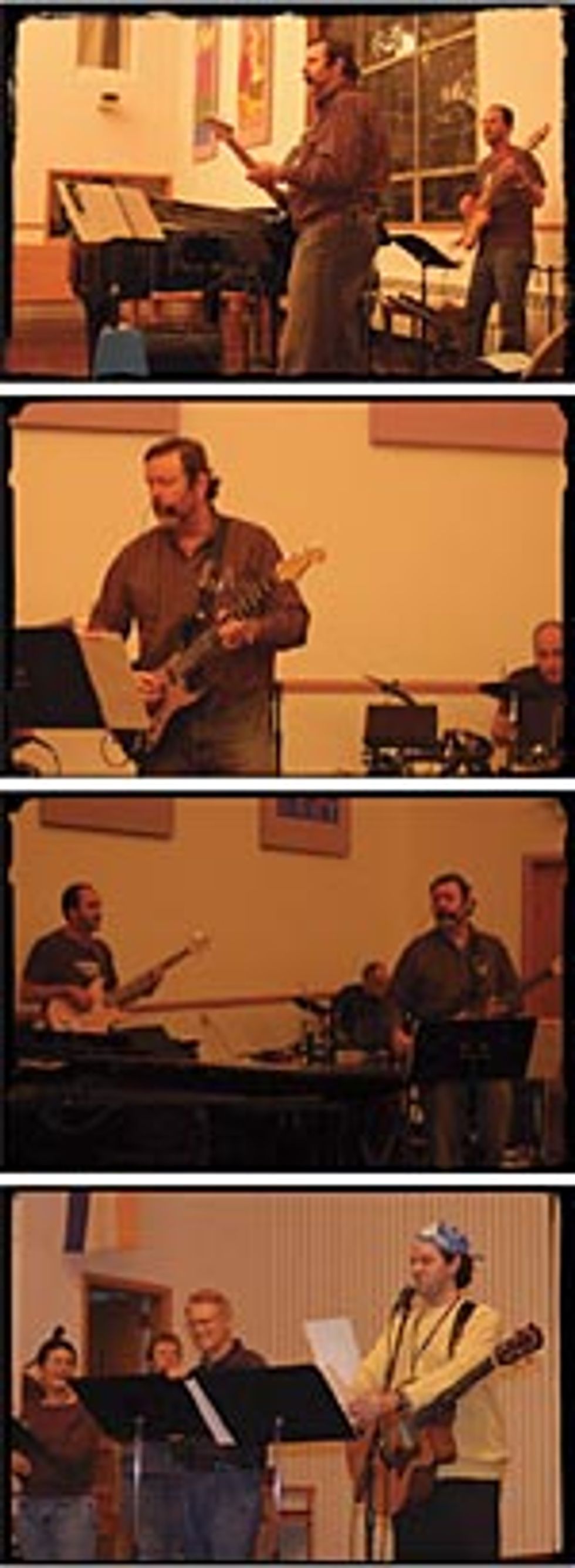 Although rehearsal for the church’s weekly praise band is supposed to begin at 5:30, Richard tells me it’s not uncommon for members to trickle in until close to six, arriving straight from their day jobs to practice music for the next Sunday’s 11:00 contemporary service. While these musicians are all volunteering their time to First Lutheran, most have played for years, if not decades. Bassist Brad Hines, an unassuming presence in his faded t-shirt, is the first to arrive, politely passing on Richard’s cookie and setting up his equipment directly under a giant stained glass window and several hanging signs representing significant moments in the church’s year-long lectionary.
Although rehearsal for the church’s weekly praise band is supposed to begin at 5:30, Richard tells me it’s not uncommon for members to trickle in until close to six, arriving straight from their day jobs to practice music for the next Sunday’s 11:00 contemporary service. While these musicians are all volunteering their time to First Lutheran, most have played for years, if not decades. Bassist Brad Hines, an unassuming presence in his faded t-shirt, is the first to arrive, politely passing on Richard’s cookie and setting up his equipment directly under a giant stained glass window and several hanging signs representing significant moments in the church’s year-long lectionary. The band exists in a unique setting, creating rock-tinged, joyful noises amongst an old pipe organ and wooden pews. The Lutheran tradition is a quiet one, and perhaps appropriately, guitarist John Shaw walks silently down the carpeted aisle towards the front of the sanctuary with two guitar cases in hand – one holding his glossy black Fender Fat Strat and the other a Guild D-46 – and a variety of other zippered bags hanging from his arms, packed with cables and various electronics. He’s a big guy, and as he pulls his Strat from the case, I notice it looks like a ¾ size instrument. He plugs in his POD 2.0 and its accompanying foot controller, sets up his Rolls PM50S Personal Monitor Amp, and has a short dialog with Matt Draeger, the 22- year-old staff member manning the soundboard from the choir loft.
The singers trickle in – a talkative bunch, flipping excitedly through charts – and drummer George Hannah saunters down the aisle, announcing that things need to wrap quickly, as he has tickets to the Iowa basketball game later that night. On that note, Richard kicks the rehearsal into gear, strapping on his Taylor acoustic and leading the compact band – two guitars, a bass, drums and several singers – through vibrant, deep renditions of songs with titles like, “You Are My King” and “My God is an Awesome God.”
While the band plays, and John’s deliberate, unfolding lead lines cut through the mix, I join Matt above in the loft, watching as he tweaks knobs on the antiquated mixing board, just a few feet away from giant pipes that still pulsate at early morning services.
He tells me about the church’s budget for new equipment (small, but growing), about the church’s next needed purchase (a better monitoring system) and discusses some modest acoustical treatments around the area in front of the sanctuary to help it sound better (maybe). The rehearsal runs until a little after seven, with Richard giving out some final instructions before a quick dispersal by the band.
Scenes like this – churches, both conservative and modern, embracing instruments and sounds that would have been previously rejected as unacceptable – are rapidly becoming the norm in modern worship. Enter any house of worship today and the odds are high that you’ll hear a full band leading the congregation through fast-paced, contemporary tunes. Led by artists like Chris Tomlin and Lincoln Brewster, sounds that might have previously been heard in pyrotechnic-laden arena concerts or smoky bars are now being used to teach the word of God. Blues and rock motifs are being reworked with inspirational lyrics and played on high-end, boutique equipment in worship services all across the nation.
And while a small group of hardcore traditionalists continue to cry foul, most people have welcomed the musical shift, bringing with it a new attitude to an institution once considered staid and traditional.
While the incorporation of classic rock riffs might initially seem incongruous with the church’s mission, a key ingredient to this surge of interest lies within the changing demographics of the church. When the Baby Boomer generation first picked up instruments, they cut their teeth on tunes from the Beatles, the Rolling Stones and Led Zeppelin; as they age and find themselves back in the church, there’s a strong desire to hear the sounds that inspired them years ago – and to re-experience the feelings associated with those sounds. Bruce Adolph, publisher and editor of Christian Musician magazine views it as a move to get back to collective roots. “In the past ten years there’s been a dramatic shift – there’s been a big movement back to the morals [the Baby Boomer generation] came from. They’re finding themselves spiritually and getting involved in the music of the church.”
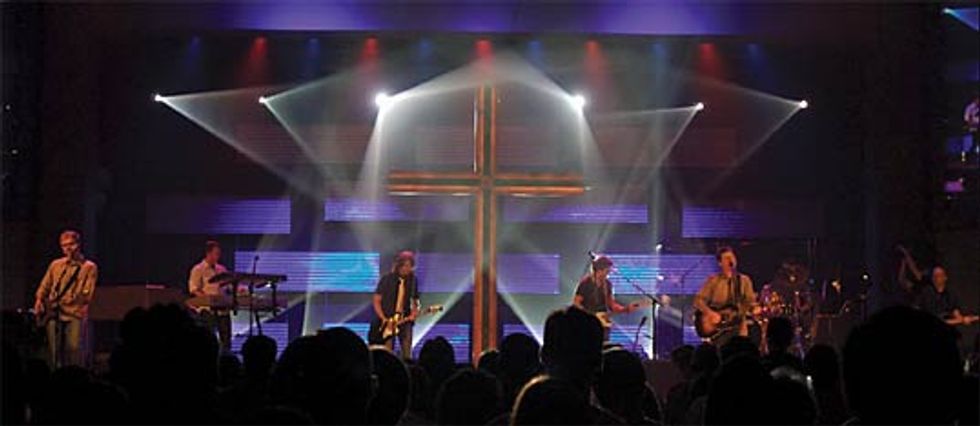
|
There are also subtle financial forces at work here; as Baby Boomers send the kids off to college and finally pay off their mortgages, they’re finding more disposable income in their pockets. The opportunity to finally buy that Custom Shop Strat or a Marshall full-stack from their youth is there, but in a new, gentle irony, they have no place to play it. Housing development bylaws and city ordinances mean the volume level in the garage needs to be kept down, and the idea of sitting in a crowded, smokefilled bar no longer has the allure it once did. That leaves the church as a venue for expression, and droves of middle-aged guitarists are bringing their passion into God’s house.
But it would be a mistake to simply assume the arrival of experienced, tone-seeking guitarists on the church scene is solely for a place to show off their new purchases. Musicians are discovering the church as a place to serve the community and to share the good news. When I asked Brad Hines, who grew up on Bob Dylan and Neil Young, why he chooses to play at the church instead of secular gigs, he primarily referenced the sense of joy he receives from it. “It’s a service; you’re getting involved. Church has become a daily part of my life.”
Richard agrees. “I’m interested in other musicians knowing that they are not just musicians – they are worship leaders. They have influence in their service, and they have a role of welcoming people to worship and introducing people to the spirit of God.”
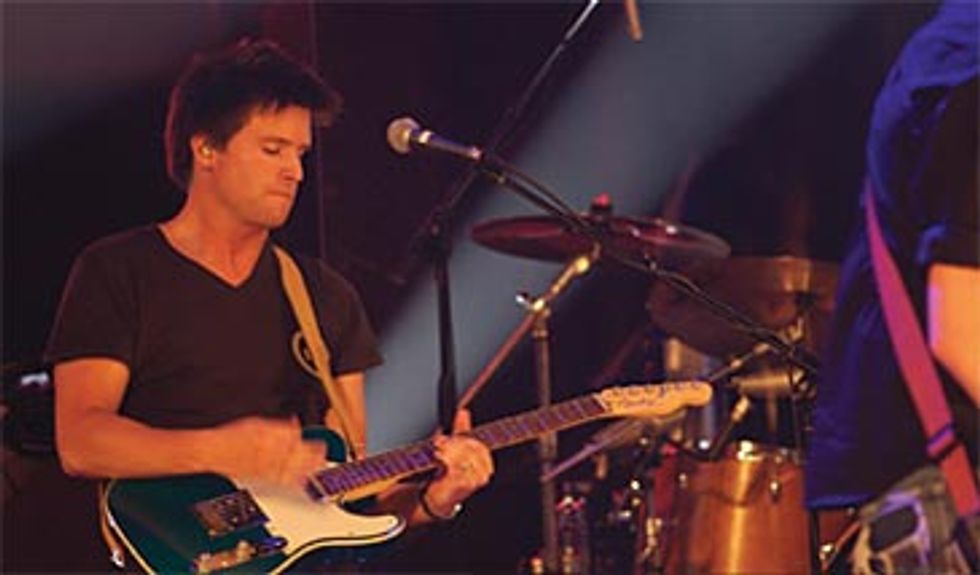
|
North Point Community Church, based 20 minutes north of downtown Atlanta, is a textbook example of how the integration of contemporary musical sounds has worked to change the way congregations worship. Beginning 12 years ago with only a keyboard and a semi-circle of singers in a converted warehouse, the church has blossomed into a weekly concert experience for attendees. The Alpharetta, Georgia church accommodates approximately 6,000 worshipers each week across two auditoriums, both featuring live bands and sharing a backstage area – and that’s only at North Point’s “main” campus, with more live music at two other satellite locations.
According to Reid Greven, a music associate at North Point charged with hiring all of the church’s bands and writing arrangements, one of the most essential components of modern worship is the guitar. “We couldn’t do a Sunday without them, and they are, by far, the most important part of what we’re doing musically.”
North Point has worked hard to create a welcoming environment for their guitarists. As a matter of fact, North Point’s technologically advanced setup would put some large performing venues to shame. Professional staff members manage an automated front-ofhouse digital console. Rehearsals are recorded on Pro Tools and given to each musician afterwards to aid practicing. Players perform with wireless setups and use custom-molded in-ears systems for monitoring. Amps are isolated and mic’ed in a back room, allowing the guitarists to operate their rigs at full, tubesaturating volume without ruining the overall mix. The players are free to dial in their own tones for each song, and have an impressive level of autonomy, considering the church’s meticulous production.
Steve Tomason, a professional guitarist at North Point who has been playing for over 20 years, performs weekly through his Marshall JCM2000 head and a Bogner 2x12 cab, and is quick to emphasize how supportive North Point has been. “The church has just been great; they really understand what we’ve been talking about in emphasizing quality. They don’t mind spending money to do things right,” he says. “I’ve played in so many places and I’ve never played around as many pros as this. We are a community.”
In fact, the integration of guitar into worship services has been so successful for North Point that two years ago the music department held open auditions for guitarists. Although they weren’t looking for any musicians at the time, Reid says they were trying to deal with the constant deluge of calls from area guitarists, inquiring about open positions with the band. “We just wanted to know who was out there, if there was anybody we should be using,” Reid recalls. “It was a real eye-opening experience for us.” Over the course of two nights, over 150 players auditioned – with over 80 percent of them being primarily electric players – and North Point brought four aboard. Only one is still actively playing with the church.
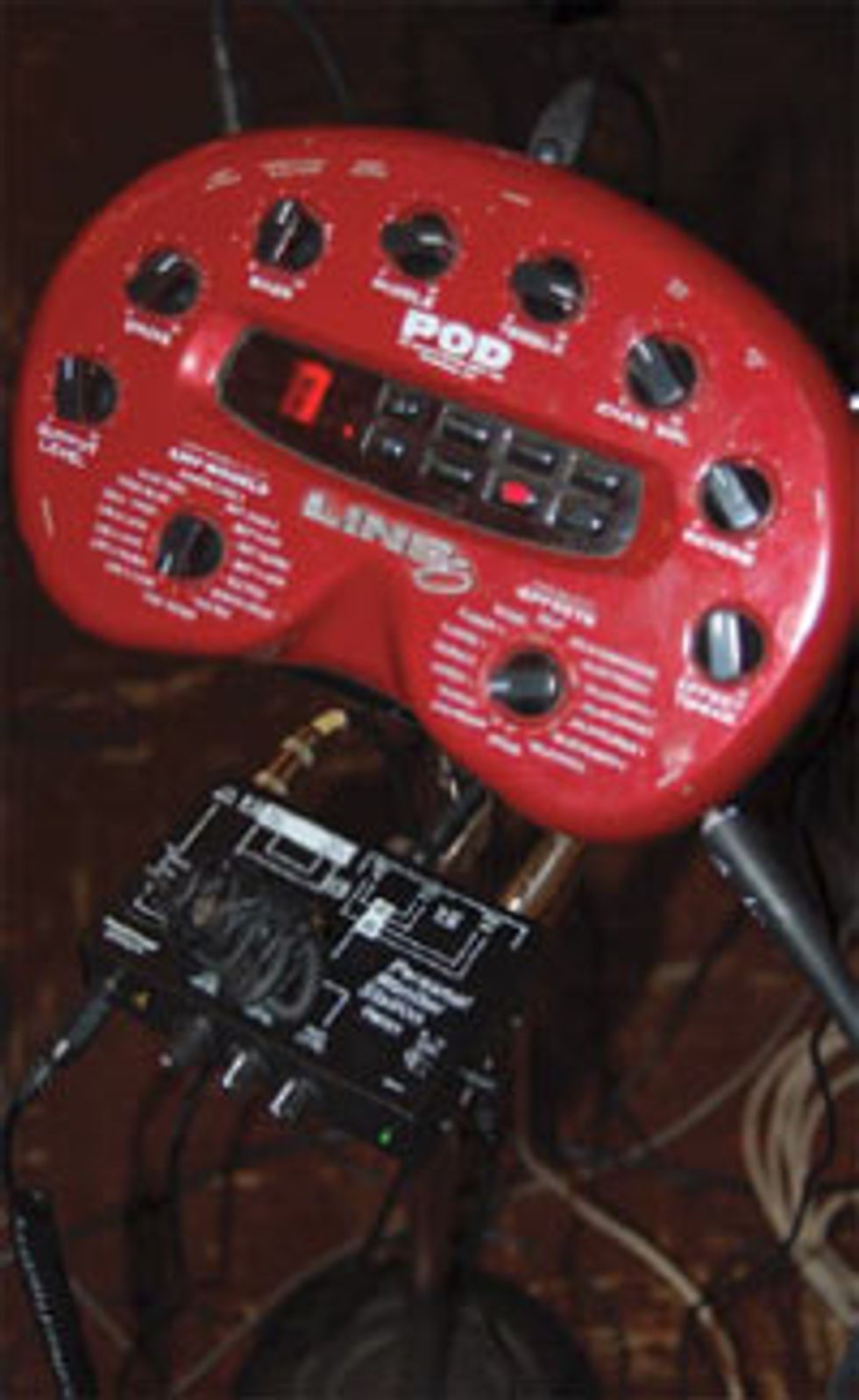 An Industry Looking Up
An Industry Looking UpIt may be an extreme understatement to say that Christian music has become big business. According to the Gospel Music Association, the unifying organization for modern Christian music, Christian/gospel (a distinction that is subtle and shifting at best) music sales have increased from $188 million in 1990 to almost $700 million annually. Over 54.2 million units of Christian CDs, digital albums and digital tracks were sold in 2006, and accounted for 6.75 percent of all album sales in 2006 – a higher percentage than Latin, classical or jazz. Over 20 million fans listen to Christian radio every week – a number rapidly approaching National Public Radio’s 26.5 million weekly draw, according to Arbitron, an international media and marketing research firm.
In a music industry dealing with unstoppable piracy, sizeable downturns in album sales and a user-driven move toward digital formats, these numbers, generated by a genre once considered fringe, have been causing record executives in Los Angeles and New York to take notice. John W. Styll, President of the GMA, says, “There may be many reasons why [sales are up], but I think among them is that people seem to be drawn to the inspiring and compassionate message of gospel music amid uncertain times.”
And while Christian rock sales may have something to do with a looming sense of anxiety in post-9/11 America, a significant part of the upward trend can be attributed to a musical maturation within the church. While Christian rock rose out of the ‘60s and ‘70s and their related excesses – beginning with the introduction of acoustic guitars and folk-rock sounds to church services – it long remained on the margins of Christian consciousness. Early Christian rock had the particular stigma of simply aping the popular sounds of the day; creativity wasn’t as important as setting religious messages to modern genres. Bruce Adolph recalls, “It was ridiculous – early Christian rock was a good five years behind mainstream sounds. But now, bands have caught up or have even gotten ahead.” Beginning in the early ‘90s, with the advent of bands like P.O.D., heavy textures and electric guitars have been gaining popularity, and are now being welcomed into the church.
The fact that this change has manifested itself so quickly, and has been accepted so seamlessly in the last ten years is somewhat surprising to Lance Winkler, director of contemporary worship at Church of the Resurrection, a large community serving approximately 2,000 people each Sunday in Leawood, Kansas. “People need to realize that this is a huge change, worship-wise, within the church. The last time church music has changed this much was in the 16th century, when Martin Luther moved church music from Latin into the vernacular.” For an institution that has sworn by the same musical forms for 400-500 years, such a radical change in worship styles is remarkable.
It’s an intriguing evolution, considering the church and rock n’ roll have not traditionally had the coziest of relationships. From the very beginning, as Elvis’ hips gyrated and the Beatles sent adolescent girls into fits of hysteria, religious traditionalists looked on with raised eyebrows. The new “race” music, full of fuzz-tinged electric guitars and driving drum patterns, flirted with sexuality and dissent. It was anti-establishment, and the church was the original establishment, resulting in a cultural war between zealous clergy members and rock n’ roll’s biggest icons – not to mention stacks upon stacks of charred vinyl.
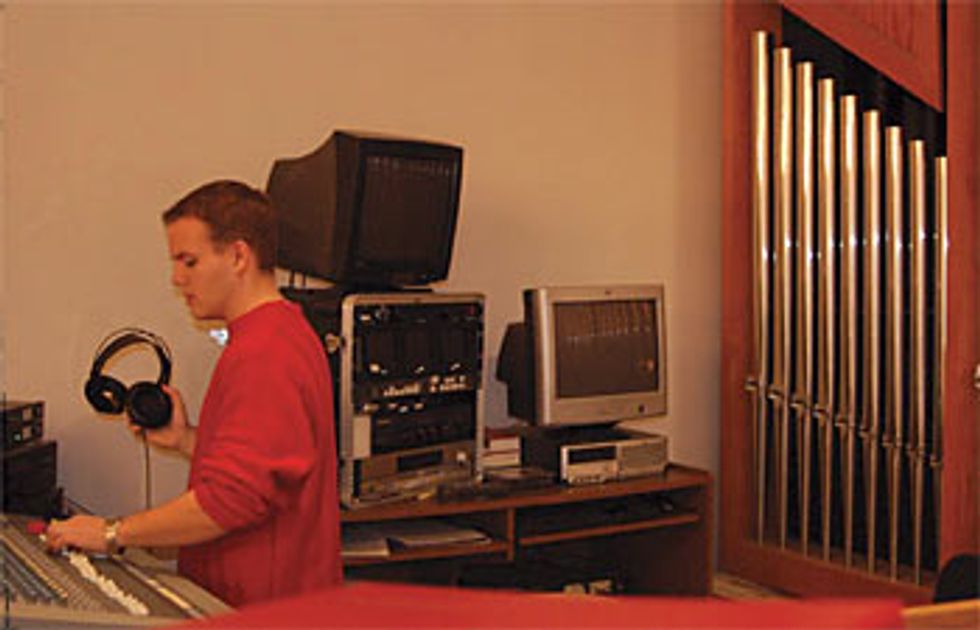
|
And while Larson’s words may now seem like pure scaremongering, rock n’ roll’s early image as a tool of the devil succeeded in keeping contemporary sounds out of the church for decades. Only after years of uninspiring music did congregations begin clamoring for harder-edged sounds on Sunday morning. According to Lance Winkler, “In the beginning, the term rock n’ roll didn’t really represent good things, but that stigma is pretty much gone today. As a result, the church feels like it can now bring in some of that music.”
The Economics of Worship
Ironically, it may now be the church that will save live music. As the numbers of paying gigs continues to drop – eroded by lessened community support and increased entertainment options for consumers – and the price of everything from guitar strings to gasoline continues to rise, professional musicians are finding themselves in an increasing painful pinch. Meanwhile, as ticket prices for concerts and festivals continue to skyrocket, people are staying home, giving record companies less incentive to find pioneering acts. Thomas F. Lee, President of the American Federation of Musicians, recently testified at a Senate Hearing on public performance rights, “People don’t realize that 99 percent of the people who make money from music are not household names. They are club acts, mid-tier and emerging artists, background musicians, orchestras, studio musicians and others who struggle to make ends meet.”
Meanwhile, as churches find themselves ministering to growing audiences – audiences who are now expecting presentations on par with popular mainstream productions – they are spending money to retain talented, professional musicians. According to Reid Greven, all of North Point’s band members could be considered at least semiprofessional, with almost all of them earning a significant amount of their income through music. Rehearsals run for three hours on Wednesdays and all of the musicians are paid for their services at the church – in addition to being well fed before practice and performances. “When you use professionals, you can anticipate a professional result, and you can demand more of them,” Reid says. “They can execute the music better, and what it really does is decrease the learning curve. They don’t have to go home and woodshed and reinvent the wheel. It’s already under their fingers.”
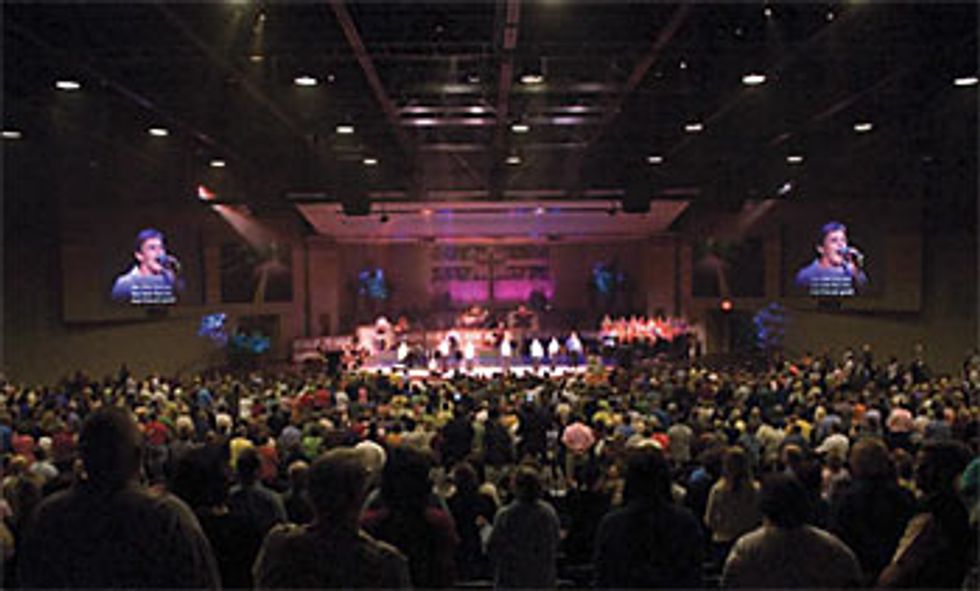
|
CrossTalk provides a variety of turn-key services to churches looking to incorporate contemporary sounds into their worship, from consulting with church leaders about the incorporation of music into services, all the way to leading weekly worship. When asked how churches request their services, bassist Doug McAlexander, a 28 year pro, explains, “Sometimes they just need supplemental musicians, including sound equipment. Sometimes they just want a worship leader. We’re just trying to meet the needs of the church, whatever they may be.”
Talking with Doug, you begin to understand how important the services of professionals are to modern religion. “People should not walk into a church and feel like they’re going back in time, stylistically or technically. People will not be drawn to sub par musicianship,” he says. It’s a mindset that is important to CrossTalk; Doug frequently discusses the need for “musical excellence” within the church, and it shows in the band’s composition. CrossTalk guitarist Britt Stein has been playing professionally since 1984; guitarist Russ Cooper is working well into his third decade of musicianship. All of CrossTalk’s members have worked in both studio and songwriting capacities.
When you’ve got professional musicians participating, you’re bound to encounter prolevel gear. Although many people might still picture church musicians playing on substandard, outdated equipment, that image has become inaccurate. Guitarists in the church are overwhelmingly gearheads – boutique is the new name of the game. Doug plays custom- made basses, in both the fretted and fretless variety, and claims 13 in his arsenal. He plays through a Thunder Funk bass head – “made by a guy named Dave Funk who worked on the space shuttle,” he excitedly tells me – and Euphonic Audio cabinets. You won’t find a low-end piece of equipment anywhere near his rig.
Likewise, Britt Stein plays through a Genz Benz Black Pearl head, run into an Avatar speaker cabinet filled with Celestions. His pedalboard is filled with a variety of pedals from names like Keeley, AnalogMan and Barber. “If I get something that I don’t like, it literally drives me crazy,” Britt confesses. “I think my ear changes from time to time, because I’ve been through a lot of drive pedals.” When asked if he encounters gearheads in his musical worklife, Steve Tomason of North Point says, “Absolutely. Even after playing clubs for years, I’ve never run into more gearheads than I have in the past eight years, playing in churches around the country.”
And while many of these musicians are buying high-end equipment, they are not the only segment of the market driving the expansion of technology within church. With more people coming to worship services for the show – the New York Times recently reported that, “large, modern, nondenominational churches now provide one of the major ways that Americans hear live music” – there has been an explosion of church spending to help spread the Word. Churches are refitting sanctuaries previously designed for the massive bellow of pipe organs, or even building all new centers, to accommodate modern sound systems and high-tech video delivery. So-called “megachurches” like the First Church of Christ in Burlington, Kentucky – an 85,000 square foot worship center housing a bookstore, child care center and basketball courts, among other amenities – are redefining the experience of worship through the use of multimedia presentations.
Logically, musical retailers have taken notice of houses of worship and Christian musicians. As retailers and manufacturers face soft markets, increased costs and more competition, houses of worship with budgets like that of Fellowship Church in Grapevine, Texas – featuring over $800,000 of electronic equipment in the control room alone – represent a major opportunity.
For example, Yamaha Corporation of America launched its Institutional and Commercial Services department back in 2004, providing information and resources for worship leaders interested in incorporating new technologies into their services. The company stages events around the country, in partnership with Shure and Aviom, aimed at parishioners charged with equipment decisions, featuring classes with titles like, “Mixing for Worship.” The savvy move by major players like Yamaha seems to create a win-win for both churches and commerce. “A new survey has shown that if people detect a sub par presentation, they’ll automatically reject the message as sub par,” says Christian Musician’s Bruce Adolph. “But if they go to a church that’s high-tech, with good sound and lighting, they’ll feel comfortable and be more open to the message.”
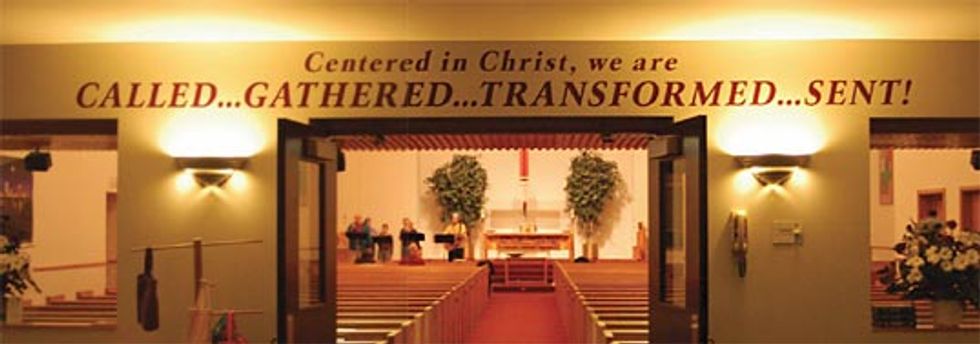
|
The Challenges of Church
For an instrument long associated with the music of rebellion, the integration of the electric guitar into modern worship has been impressively smooth. But that’s not to say the instrument hasn’t introduced a number of previously unheard of challenges into the church – one of the most obvious problems being that the electric guitar is loud.
It could be argued that pipe organs are even louder, possessing the power to fill a large room with sound; however, older churches were not acoustically designed for the unique sounds and frequencies of the electric guitar. Once you add drums and bass to the mix, the potential for sound levels inside the worship hall to rise to unacceptable levels is significantly heightened. Some churches, such as North Point, have developed extensive setups for guitarists, going as far to acoustically isolate their cabinets, but most churches lack the resources or expertise to develop such systems.
Thus, as a solution, most church soundmen – at the advice of companies like Yamaha – abide by a “quiet stage” philosophy, bringing in digital drums, keyboards and guitar processors. “These days, there are a new breed of soundman that are looking for low stage volumes, and they want to run everything through the PA,” says CrossTalk’s Britt Stein. “There are all age groups in the church, and they don’t want to seem too loud for anyone.”
For guitarists, approaches to conquering the volume problem typically fall into one of two camps, split primarily along age lines. Older guitarists, players who have been relying on the same equipment for years, tend to find an amp they are comfortable operating at lower volumes. Options like isolating amps in a back room are also available. When asked how he ensures his volume is not overpowering, Russ Cooper says, “We just turn the amps around and mic them. That way you can get the tubes hot, but your sound doesn’t bleed. It’s not as loud as I want, but it’s not as quiet as it used to be.”
For more technologically-inclined guitarists, digital modeling and guitar processors may offer the best solution for achieving good tone while keeping the volume down. Perhaps one of the most visible proponents of digital modeling is Lincoln Brewster, who uses Line 6’s POD in both the studio and on stage. Whether in a strictly preamp capacity, or as a complete guitar solution, digital guitar modeling looks to play a larger part in the church environment, as churches work to bring as many aspects of worship – including volume levels – under control.
However, the sheer volume of the electric guitar isn’t the only obstacle worship leaders are grappling with. With the electric guitar comes distorted signals and a different level of showmanship than the church has been accustomed to. Images of Pete Townshend strumming in wild windmills and Jimi Hendrix kneeling above a flaming guitar have become societal touchstones, and when the guitar enters the church, two distinct cultures – those of rock n’ roll and Christian tradition – must coexist. As the electric guitar continues to enter worship services, the question of what is appropriate, in terms of everything from solos to gain levels, is a popular one. The publishing of a book of sermons in 2003, entitled Get Up Off Your Knees: Preaching the U2 Catalog recently highlighted the growing collusion of mainstream secular music and the church.
The fine line between worshiping with instruments and coming off as a rockstar is a delicate one for many musicians to walk. “There’s a lot of different opinions on the topic – is the guitarist just showing off, or is it for God? We’ve been in situations where people have accused us of being more concerned with the technical instead of the spiritual,” says Britt Stein. “But essentially it’s the same as in secular music; if a solo or a riff adds something to the song, then it should be there. As long as it doesn’t take away from the worship, there’s no problem.”
Perhaps Lance Winkler of Church of the Resurrection best sums up both the questions facing guitarists in a modern worship setting, as well as the place of the instrument within the church: “I know when Kevin Rogers, a local worship leader, plays a solo, he’s playing to the glory of God. I hear the guitar as a clarion call, an emotive sound. It’s a heroic sound that can really move people.”
| Crossing Over Christian music has a history of musicians “crossing over” to and from other genres. Here are five names worth mentioning. Mark Farner – Grand Funk Railroad’s lead singer and guitarist enjoyed success on the Christian charts between Grand Funk reunions during the early ‘90s. Farner even recut “Some Kind of Wonderful” with a Jesus-bent – much to the dismay of many die-hard Grand Funk fans. Rick Cua – The former Outlaws bassist (“Green Grass and High Tides Forever”) has had a prolific career in Christian music. Without a doubt, his best album to date is 1986’s Wear Your Colors, a guitar- driven collection of upbeat rockers. Gordon Kennedy – The former axe man for White Heart, a popular Christian rock band that reached its creative peak when Kennedy and a handful of other eventual crossover musicians powered the lineup in the late ‘80s, went on to become an A-list session player, writer and producer. Kennedy co-wrote Eric Clapton’s “Change the World,” which won the 1996 Grammy for Song of the Year. Rick Derringer – The talented guitarist who gave us tunes like “Hang on Sloopy” and “Rock and Roll Hootchie Koo” was born again in 1997. He has since released two Christian rock albums, titled Aiming 4 Heaven and Still Alive and Well. Dann Huff – One of many Huff family members who made a mark in Christian music, Dann played lead guitar for White Heart before Gordon Kennedy. Dann is better known for his session work on hundreds of albums and for producing acts like Megadeth, Wynonna, Faith Hill, Rascal Flatts, Keith Urban and Carrie Underwood among others. |


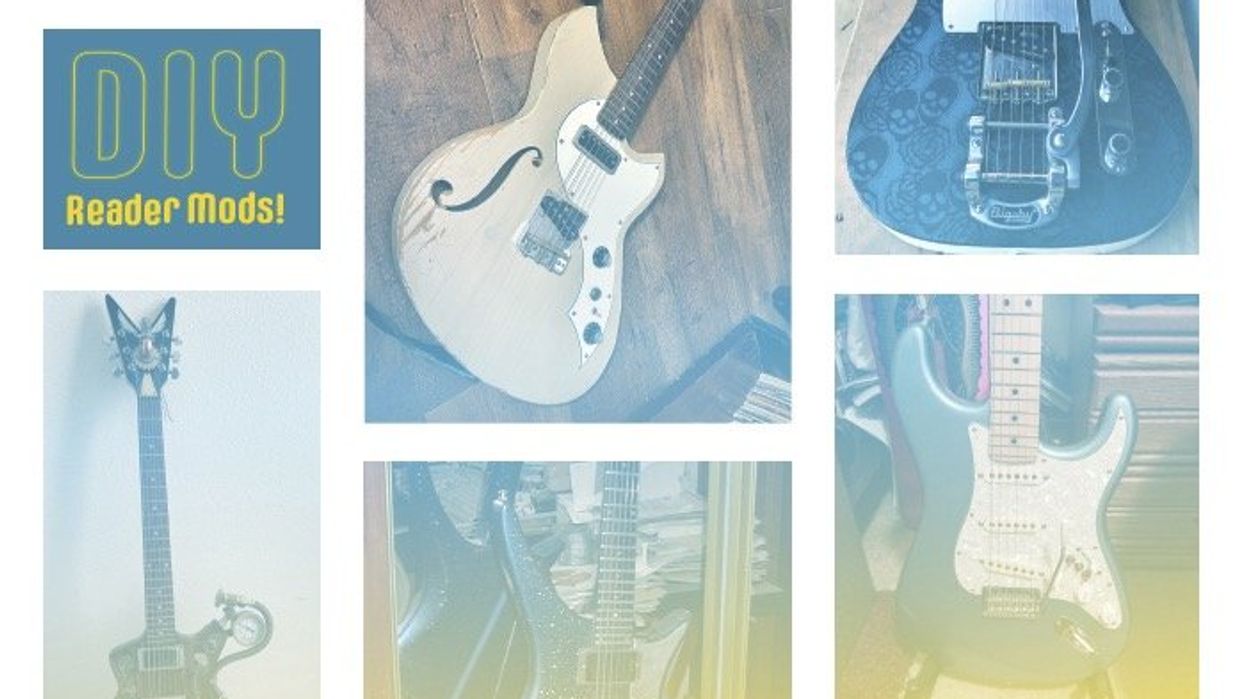
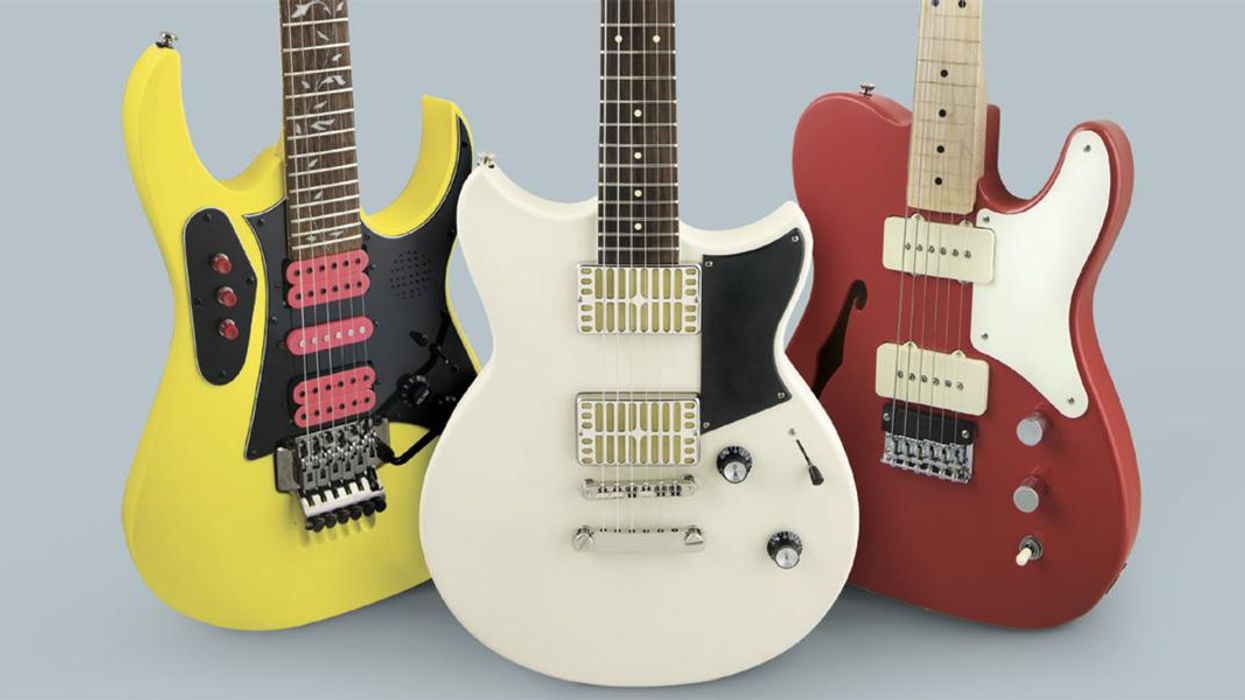
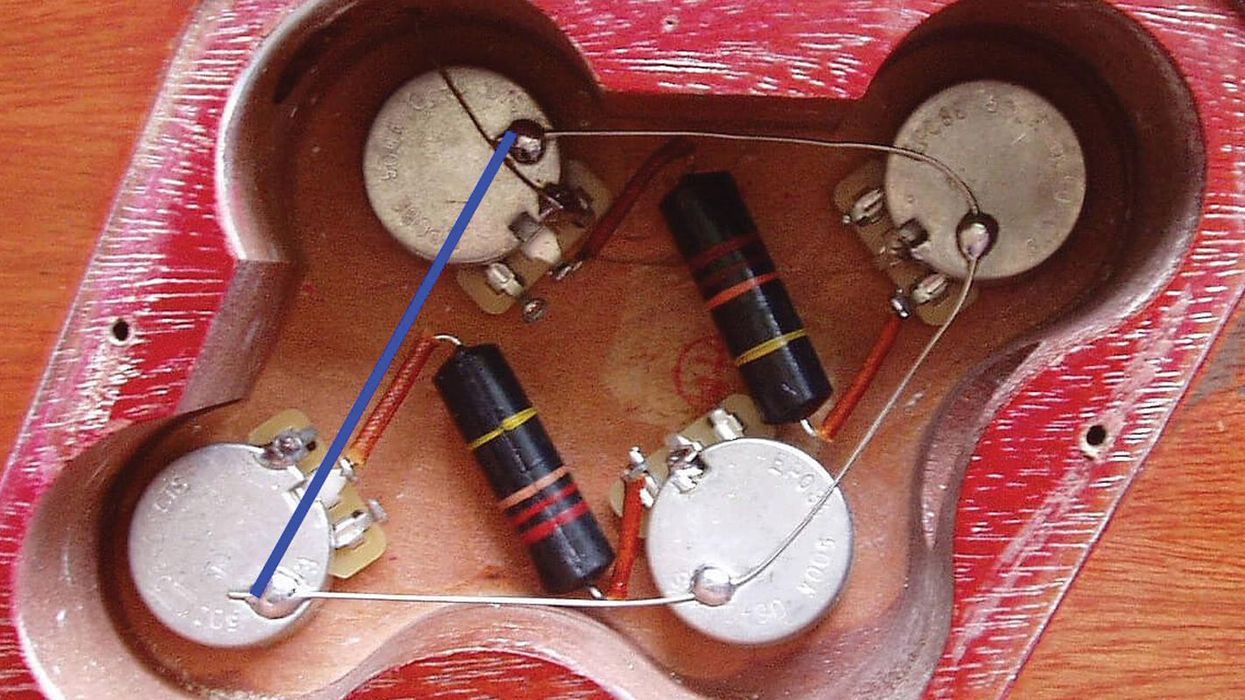
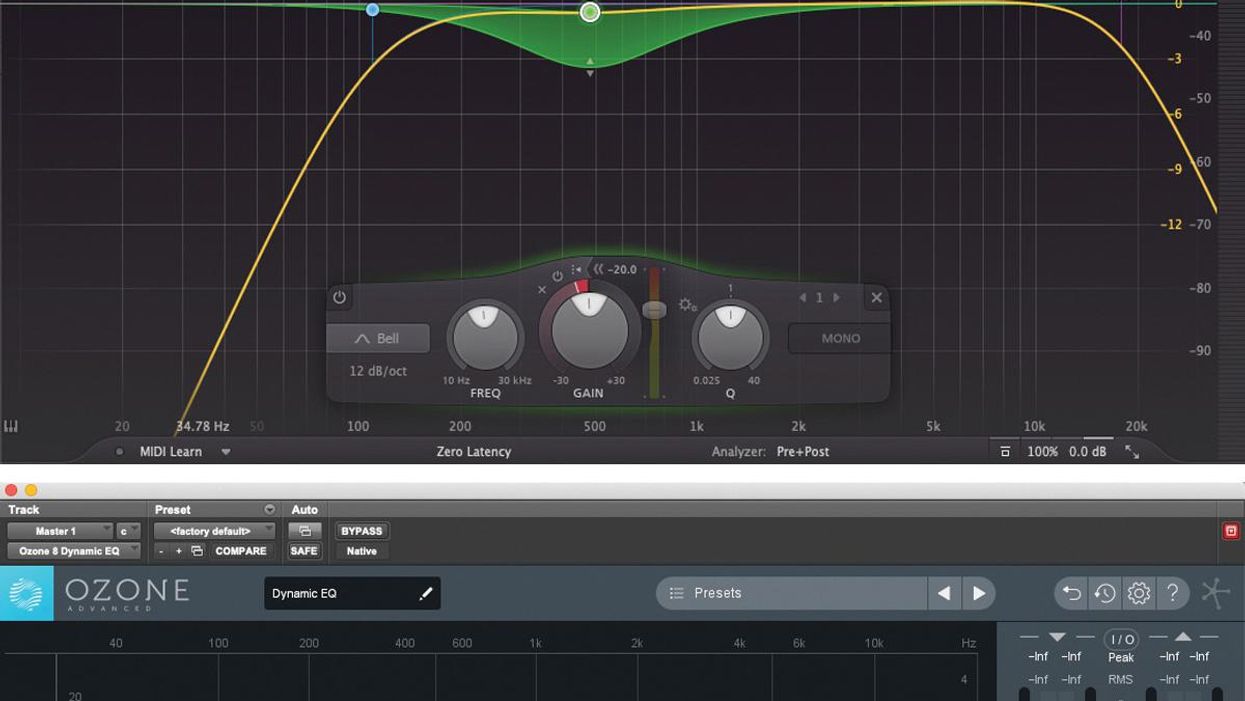












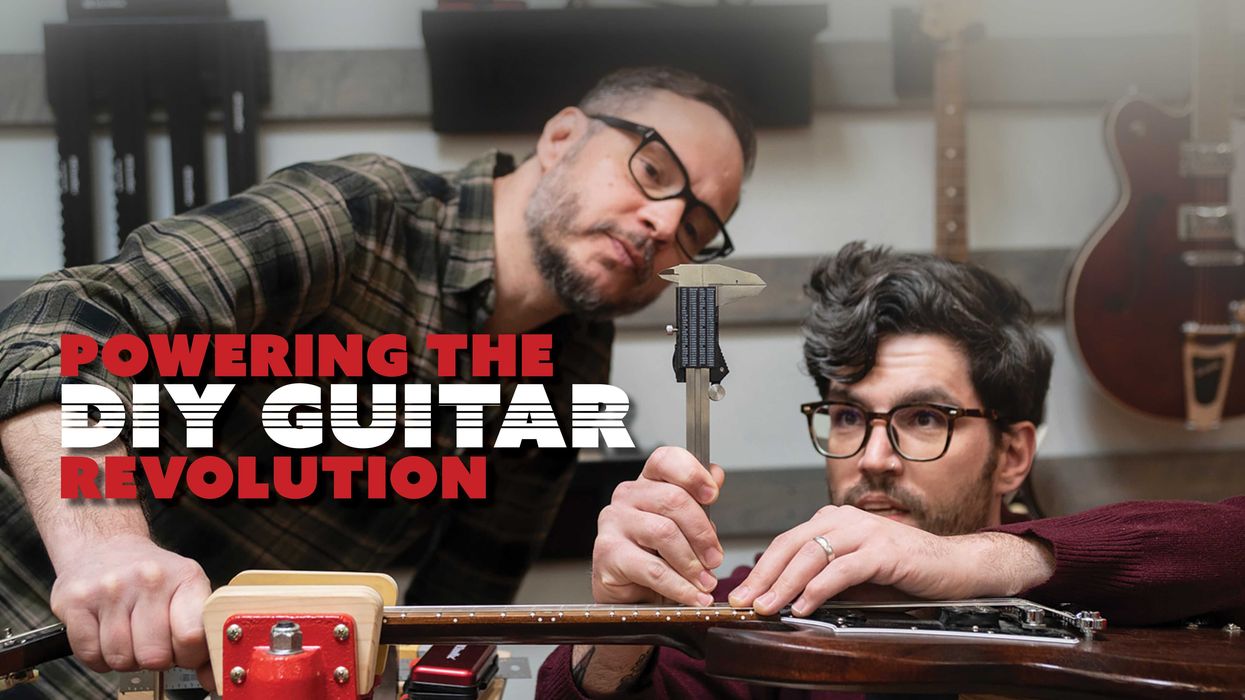
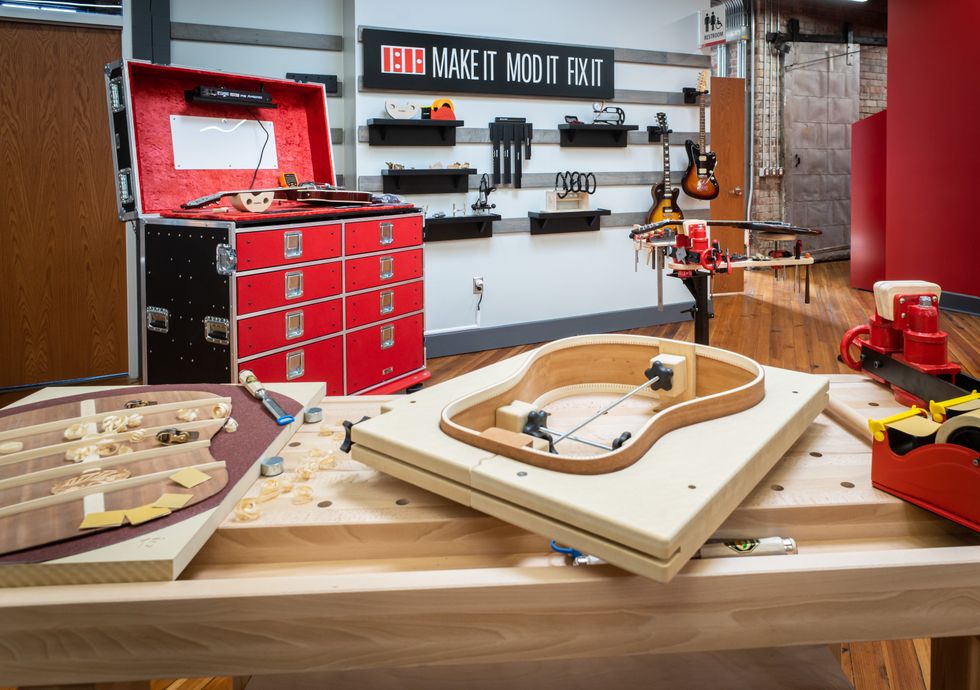
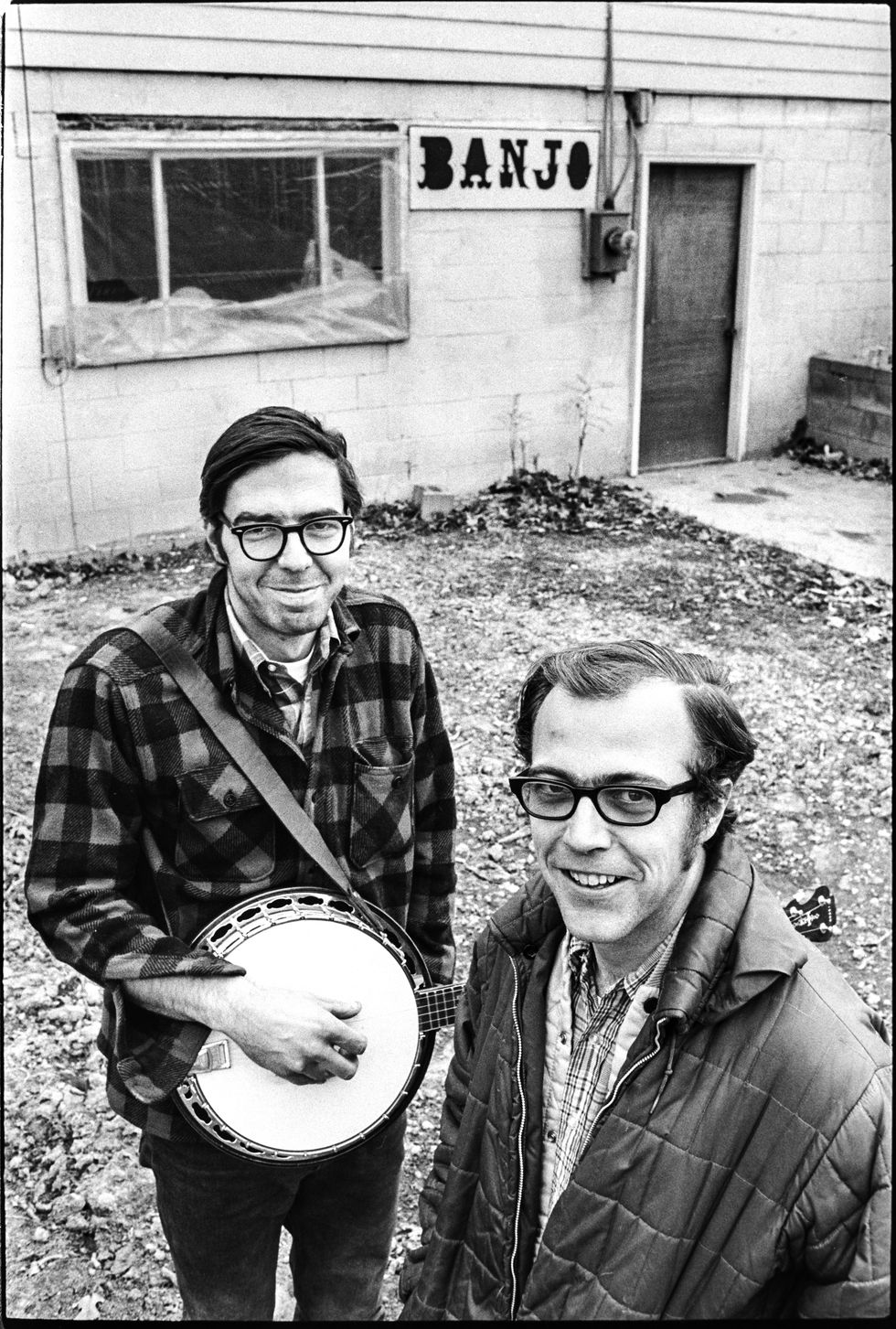
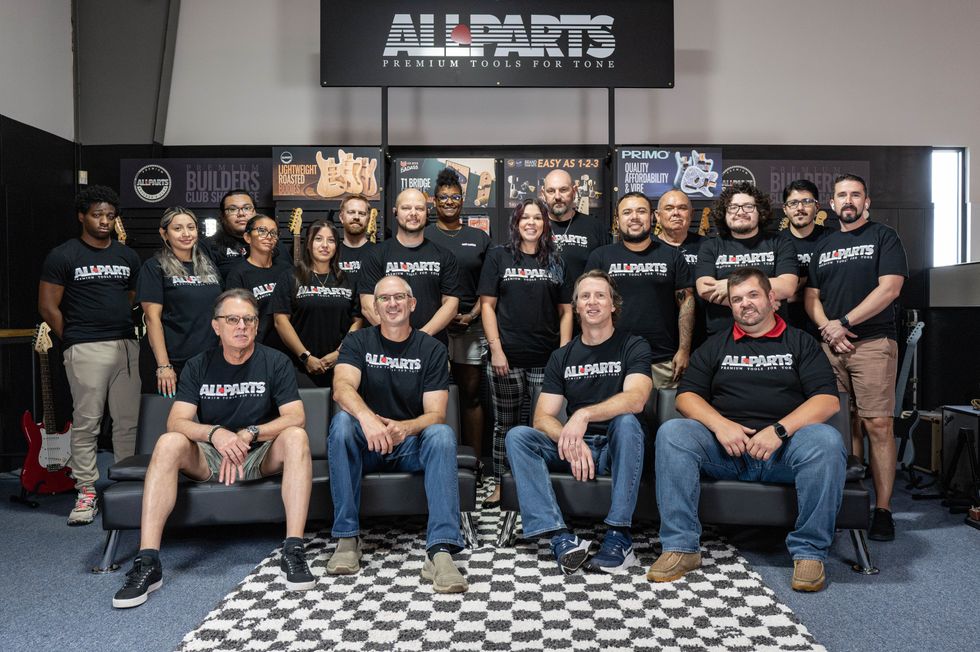 The Allparts team at their Houston warehouse, with Dean Herman in the front row, second from right.Photo by Enrique Rodriguez
The Allparts team at their Houston warehouse, with Dean Herman in the front row, second from right.Photo by Enrique Rodriguez